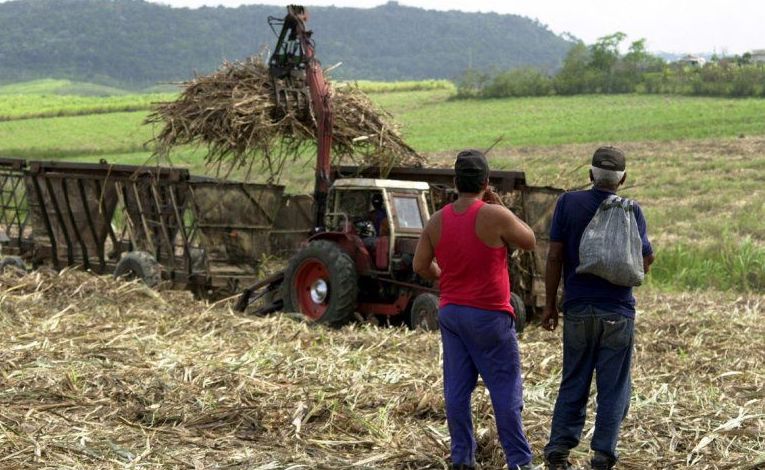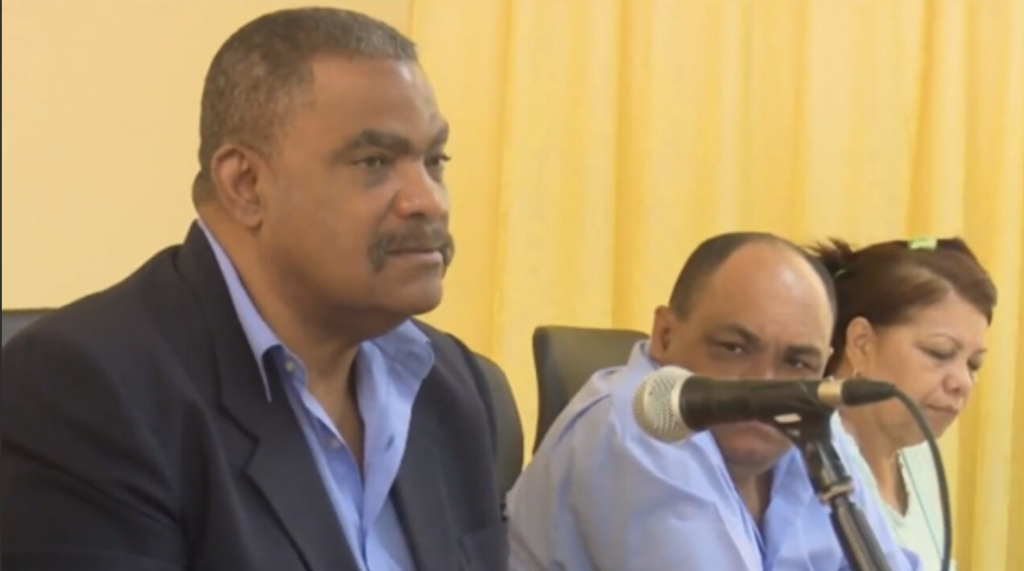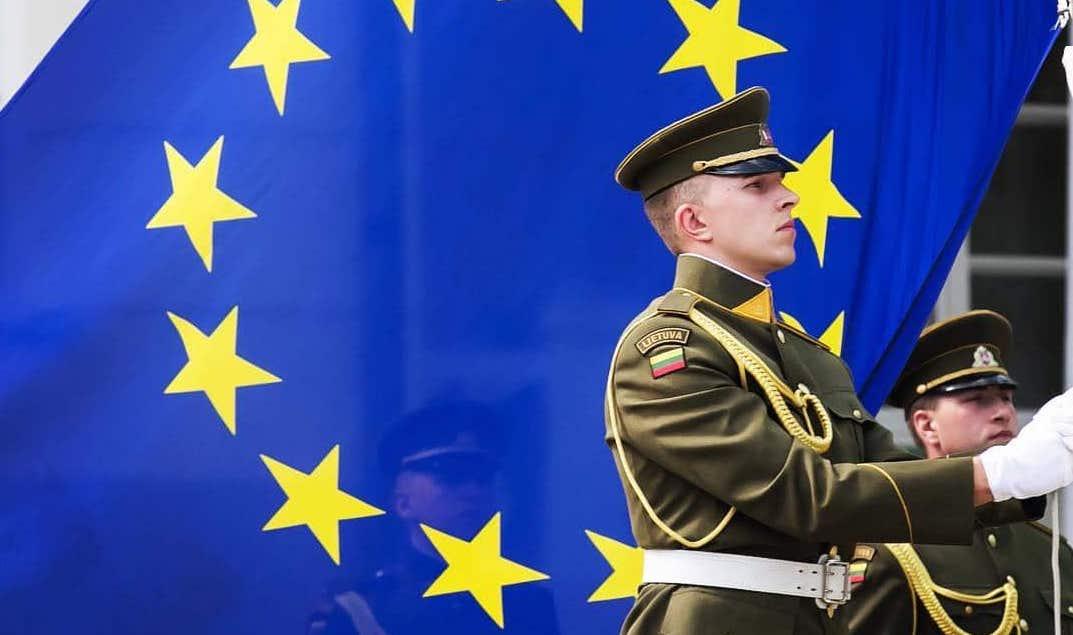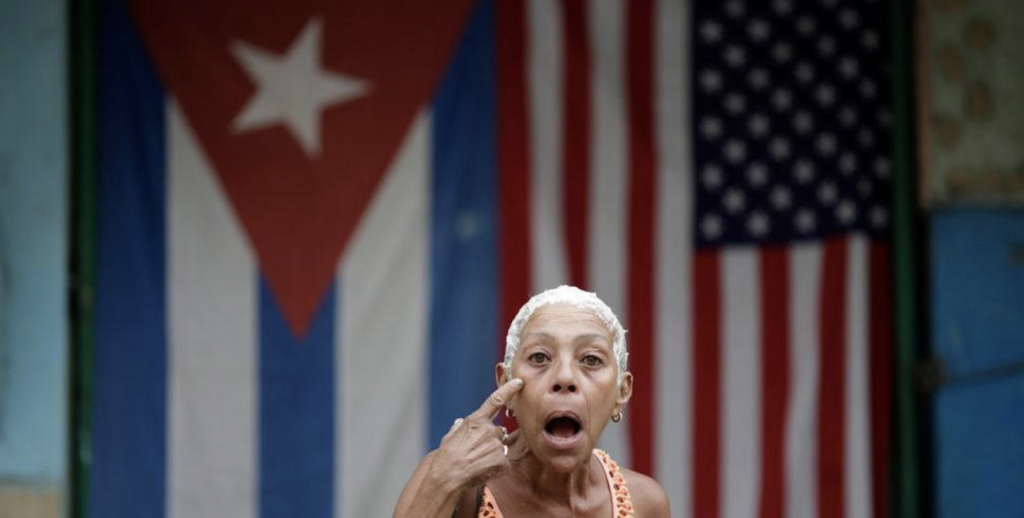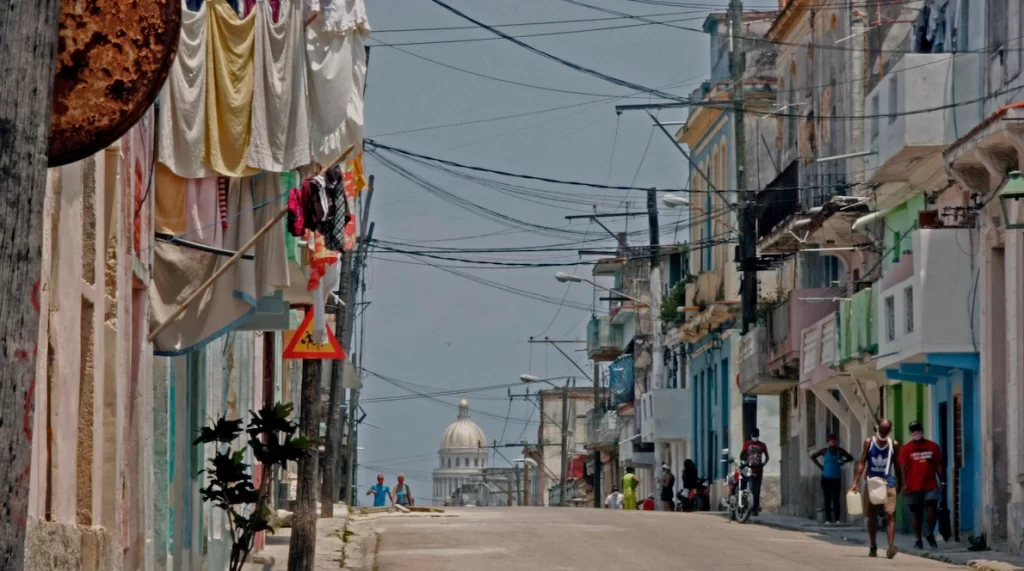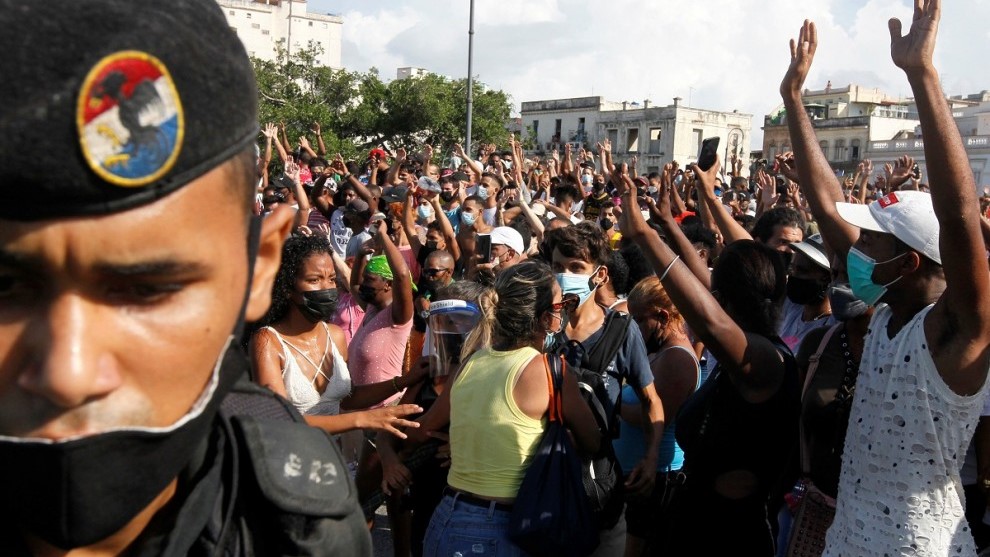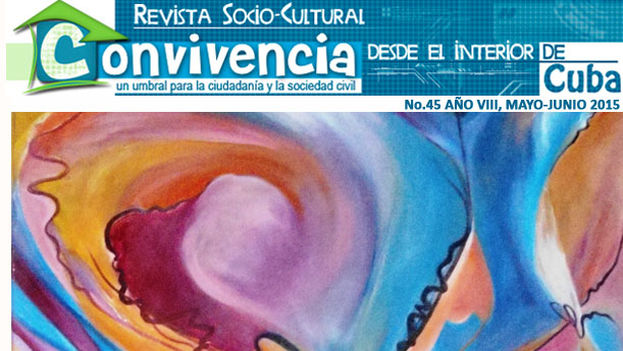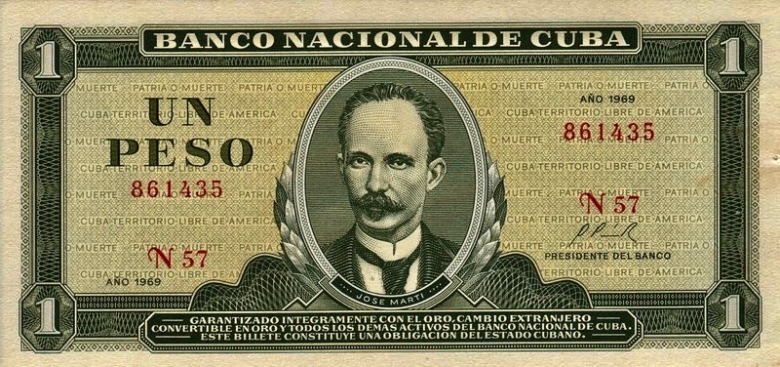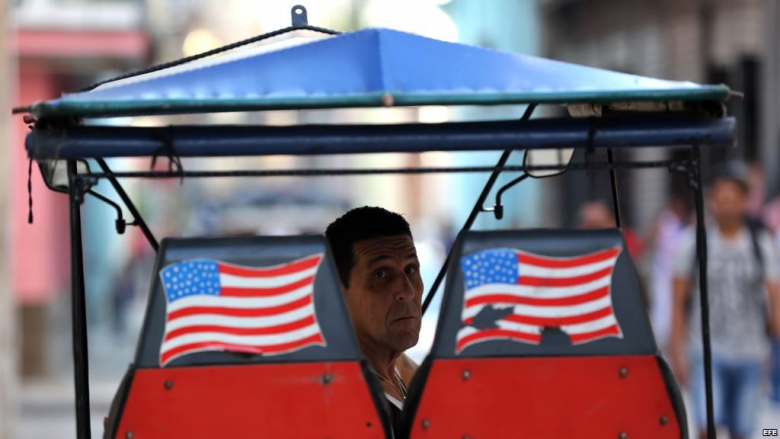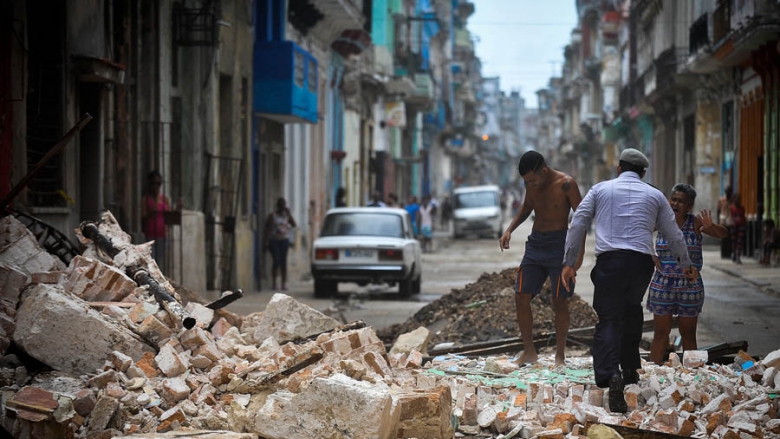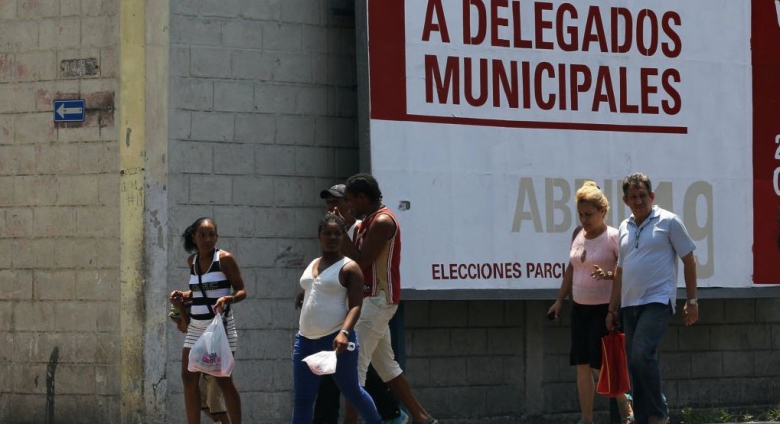“In addition to being unpopular, the government’s latest economic measures have had profound adverse effects on the economy. First of all, the economy was partially dollarized without meaningful structural changes or reforms to unleash productive capacity. Then there was currency unification, whose stated objective was the elimination of the dual currency system, something that in practice has not happened. Quite the opposite,” says Morales.
This has led to “an increase in inflation, shortages in the retail sector, increased loss of purchasing power and growth in public frustration, as reflected in the protests.”
to deposit dollars they have been keeping under their mattresses.”
“Adding to this is the impact of the pandemic. Covid-19 has obliterated the vaunted myth of Cuban medical prowess in the blink of an eye. The epidemiological situation in the country is very serious and highly explosive socially. The increase in the number of infections and deaths has been growing rapidly for days while at the same time public frustration is growing over the lack of governmental response,” he says.
He adds, “In the midst of this brutal humanitarian crisis, the regime has refused to accept help from the Cuban diaspora, which has tested the patience of citizens who lack medicine and food.”
For Morales, all these events “have produced a great rebellion” in which “Cubans have used their voices and social networks as weapons.”
He believes that “these events are a stern warning to the political leadership and the military that impunity has come to an end.”
“Senior career military officials without links to the mafia chieftains running the country, and whose hands are not stained with blood, are taking note of the situation. They will not part in any massacre that the puppet Diaz-Canel might order,” he says.
The economist believes, “This situation could lead to a fracture within the armed forces.”
“Most high, medium and low-ranking officers are experiencing the same hardships as ordinary Cubans: lack of food, medicine, blackouts, inflation, the humiliation of having to pay for basic necessities with dollars when their salaries are in pesos,” he says.
“It would not be the first time a dictatorship in Cuba has fallen. It would not be an an exception. There are already rumors that the families of Raul Castro and Lopez-Callejas have begun sending their relatives out of the country. If this turns out to be true, it would not come as a surprise. Large sums of money have been ferried out of the country for years. The generals and colonels commanding the troops are not going to bloody their hands repressing the people, nor are they going to lend themselves to the farce of watching that these crooks flea the country with their families,” he adds.
In regards to the government’s options for responding to what has happened, Morales believes that those in power “have run out of resources, have nothing to say and nothing to offer.”
“All they can offer is slavery, barbarity, hunger, submission and obedience. An economy in ruins, a country that exports practically nothing, that does not allow its citizens to generate wealth, that exports them as slaves and steals their wages, a government that steals the remittances from exiles and hides them in bank accounts in a third country or invests them in luxury hotels on the island while the public suffers from shortages of medicine and food, and the onslaught of a pandemic that has gotten out of control,” he laments.
What would Emilio Morales advise the Cuban government at this point? “The only possible recommendation would be to urge them to hold free, transparent elections with international supervision. Allow Cubans to generate wealth, end one-party hegemony, allow freedom of thought and association, and end political exclusion. Liberate the economy, the market, prices and put an end to parasitic centralization once and for all. Allow Cubans who live outside and inside the country to invest unhindered and with full legal guarantees. Allow citizens to save the country,” he urges.
Not that he expects the government to do any of this.
“It will try to buy time. It will not acknowledge the crisis. It will say that the thousands of Cubans who took to the streets are criminals, are mercenaries being bankrolled by imperialists. It will say that what they want is annexation and will repeat all those arguments and rhetorical idiocies they have been using for six decades to subdue the masses and justify their acts of violence.”
“In reality, what they will do is increase the repression and persecution of activists. The country will be increasingly militarized to discourage people from returning to the streets. In practice this will be unsustainable and will be very difficult to avoid,” he adds.
“It’s just a question of time. The dictatorship is demoralized. This is the last round and only a united Cuban people can overturn it. They already took the first step by going out into the streets. The curse of fear is already broken. There’s no going back. It does not matter if the internet is shut down or the phone lines are cut. The flame of freedom has already been ignited in the hearts of all Cubans and that cannot be extinguished by any dictatorship, no matter how violent and malevolent it may be. The beginning of the end has finally come,” concludes Morales.
A national rebellion
This is what political scientist Juan Antonio Blanco believes has clearly occurred.
“The regime has already lost two of its three supporting pillars. One was its ability to co-opt the public through subsidized employment, healthcare, and other policies. Investing in those things requires financial capital and political will, neither of which this government has.”
“The other pillar was ideological domination, its ability to present itself as a power allegedly legitimized by history, the voice of the downtrodden. It was their symbolic capital. The San Isidro and 27N movements ripped that apart,” states Blanco.
“The third pillar was fear of the the state’s capacity for repression. Sunday’s protests demonstrated that this fear is not insurmountable. The biggest gain of July 11 is the people suddenly discovering their own power,” he says.
“This system of domination is in crisis and getting worse.” The regime’s leadership, he believes, has no choice but to “leave or repress.” He is reluctant to give any suggestions. “I trust in its capacity for self-destruction,” he says.
Blanco believes the regime’s ruling elite will close ranks with those who have a stake in the system of repression.
“On Sunday there were police and rapid response brigades who refused calls for mobilization. We will see where their criminal foolhardiness leads them,” he says.
As for President Miguel Diaz-Canel’s ongoing denial of the seriousness of the crisis, Blanco believes it is “abject stupidity to say that the US government is so bothered by Cuba’s political system that it has manufactured all these protests.”
“It is an insult to Cubans’ intelligence. The assumption is that people are living happily so they must have been manipulated by another country that wants to put an end to this reign of harmony. The scarcity is due to an outdated system that seeks to create wealth rather than prevent the growth of poverty. After sixty-two years of experience, it is not a theoretical discussion as to whether or not the system in Cuba, and other Asian and European countries, has failed,” he says.
As for the Cuban president’s call for government supporters to confront demonstrators expressing their desire for freedom and to walk over their corpses, Blanco describes it as “an irresponsible, criminal statement which will have future legal consequences for this mediocre wimp from the ruling elite.”
Cuban political scientist Dimas Castellanos believes what has happened is “clearly a manifestation of exhaustion, hopelessness and despair.”
“It had been building and on Sunday it took a qualitative leap. I would not yet describe it as a national rebellion but it is a prelude,” he tells Diario de Cuba.
“The causes for this are not external. They are fundamentally internal, measures the government has refused to take. It has been delaying them and that is what has led us to this point. If there were the political will and an average level of intelligence, the situation could be turned around immediately,” he says.
“But that is not what they are signaling. As for the causes of the blackouts, for the pandemic, they claim everything is the fault of the United States and the embargo. There is no acknowledgement that the totalitarian system does not work, that it has failed,” he states.
Castellanos believes the basic reason for the protests “is the absence of liberties: civil, political, economic, every kind.”
“My advice would be to take measures they have been putting off: grant freedom to small producers, allow the creation of small and medium-sized businesses, do not try to save state-owned companies. Give Cubans total freedom to be active participants of their economy, with the ability to trade freely rather than having to go through an intermediaries like Acopio or state import/export monopolies,” he suggests.
In Castellos’ opinion, “the situation will not change from one day to the next but it will begin to change. The US would then have no rationale for maintaining the embargo.”
“They are trying to make excuses for their ignorance, for leaders who are confused, by claiming there is a foreign plot to overthrow the government. That is not the solution. You have to start by asking a simple question: Are Cubans free to participate as active agents in solving the problems of their country? No, they are not,” he concludes.
“Castroism will be subjected to ever greater social and international ridicule in the coming months.”
Independent journalist Boris Gonzalez Arenas, spokesperson for Council for a Democratic Transition in Cuba, notes, “Without a doubt, Sunday’s events were a spontaneous national rebellion.”
“As for the regime’s argument that it was all planned, what has happened is simply the classic, spontaneous manifestation of a people who have had enough. 2021 is no different from 1789 and the French Revolution. Desperate, hungry people, without medicine, without food, in the midst of a health crisis that the Covid has made worse,” he says.
“They have come out against Castroism, against the dictatorship, with information provided by social networks.”
Gonzalez believes “what this event most closely resembles is the crisis in Venezuela.”
“They are brutally repressing a hungry nation. Whether communism ends tomorrow or not, Castroism will be subjected to ever greater social and international ridicule in the coming months. If this degenerate conduct continues, Diaz-Canel will be another Maduro,”
The Cuban government’s first step must be to start abiding by the 2019 constitution, which it has crudely trampled on since its inception. The second is to recognize social diversity and then establish a process for political reform that will lead to a transitional system. I don’t know when, but there is no long-term possibility that communism will retain power the way it has up till now,” he says.
He denounces “what they have done in shutting down mobile phone networks. That is characteristic of communist tyrannies.”
“A tyranny as shameful as the one we have experienced in Cuba is only possible because of the denial of two basic freedoms: freedom of assembly and mobilization, and freedom of the press and expression. So, of course, the first thing they do is shut down the internet so that we cannot express ourselves,” he notes.
He is also critical of the security forces’ repressive actions during the protests. “When shots are fired in Cuba, they are against unarmed individuals. This is a crime, state sanctioned murder, a crime against humanity,” he maintains.
By calling for acts of mass violence, Arenas contends Diaz-Canel himself has already signaled what the regime’s next step will be. “Depending on how things play out, Diaz-Canel could emerge strengthened in the eyes of Cuba’s old guard and gain the respect of powerful factions who now dismiss him.” But what will his lasting legacy be?
